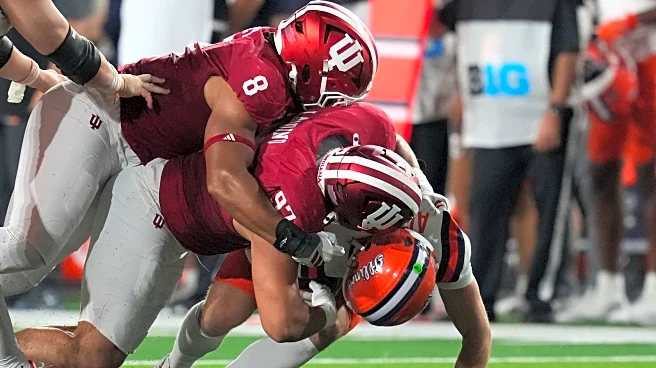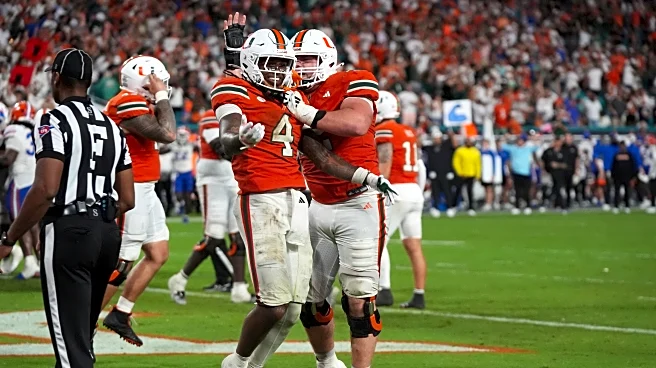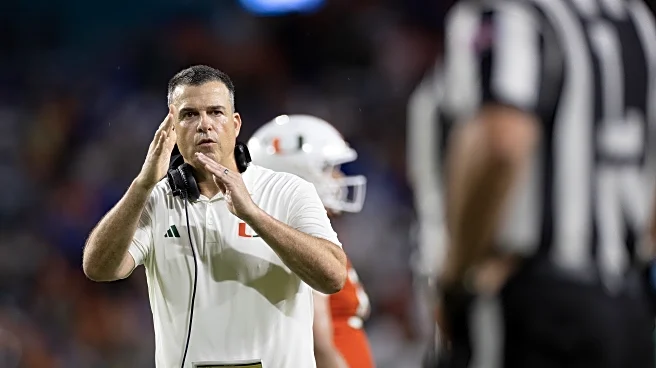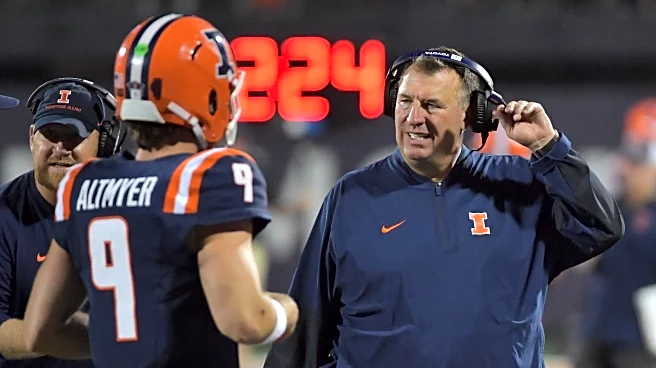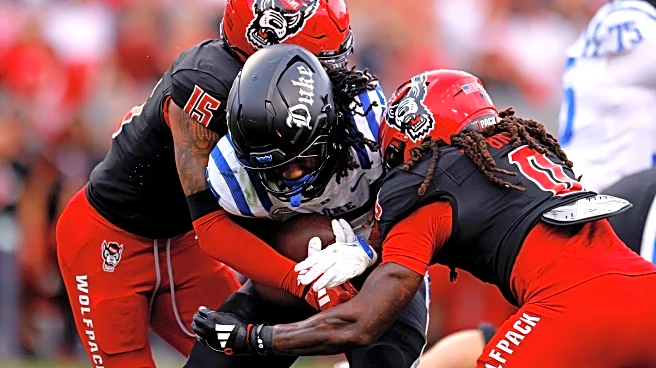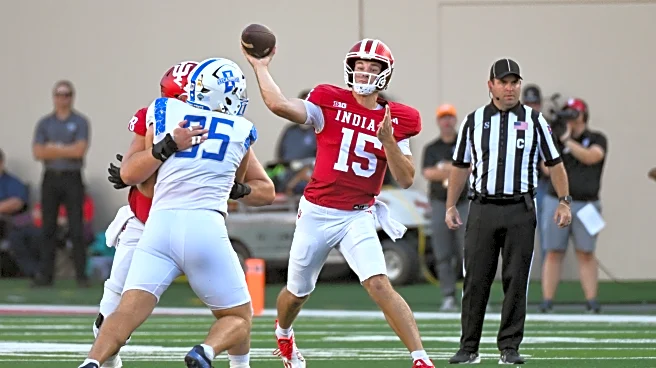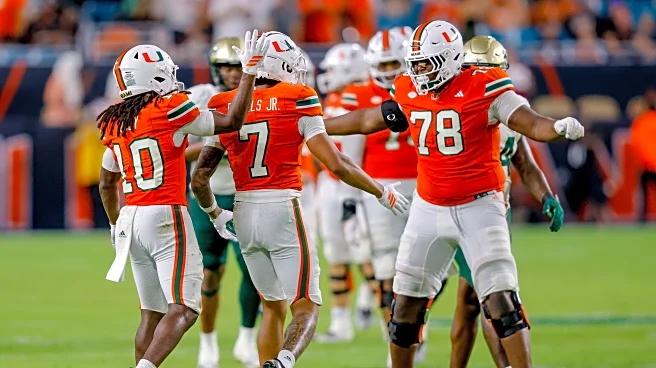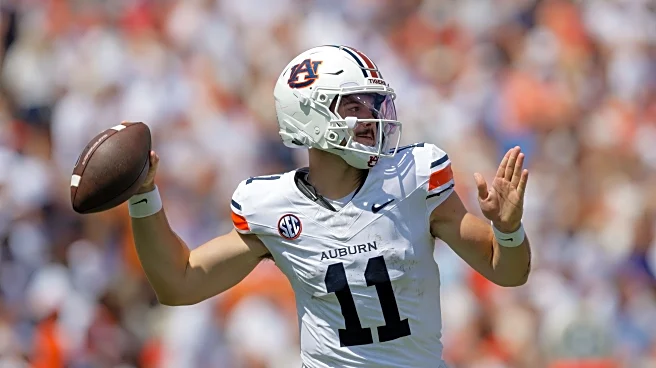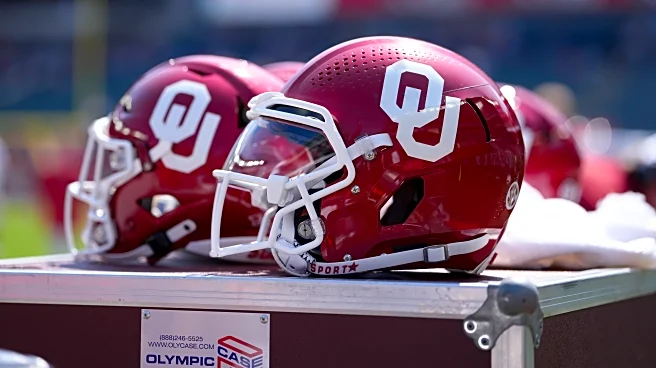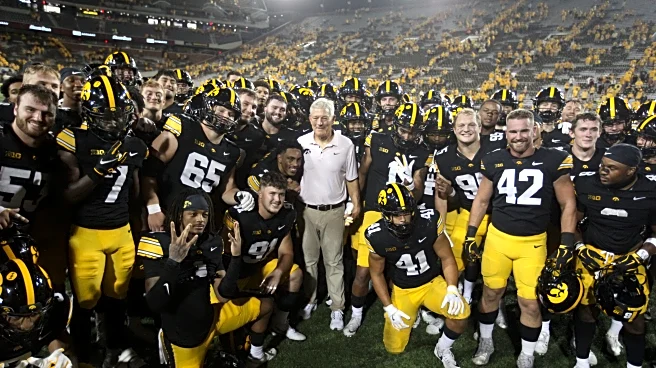What's Happening?
The Miami Hurricanes have ascended to the No. 2 spot in the AP Top 25 college football rankings following their decisive 26-7 victory over the Florida Gators. This win allowed Miami to surpass both LSU and Penn State, who were inactive this week. The rankings also saw significant shifts due to other notable games, including Indiana's surprising 63-10 victory over Illinois, marking the largest margin of victory by a non-top-10 team against a top-10 team. Indiana's win propelled them to No. 11, while Illinois fell to No. 23. Additionally, Texas Tech defeated Utah 34-10, resulting in Texas Tech moving up to No. 12 and Utah dropping out of the top 25.
Why It's Important?
Miami's rise in the rankings underscores their strong performance this season and positions them as a formidable contender in college football. The shifts in rankings reflect the dynamic nature of the sport, where unexpected victories can significantly alter team standings. This has implications for bowl game selections and playoff considerations, affecting team strategies and fan engagement. Teams like Indiana and Texas Tech, who have made significant leaps, may gain increased visibility and support, while teams like Illinois and Utah face challenges in regaining their standings.
What's Next?
As the season progresses, teams will continue to vie for top positions in the rankings, with upcoming games providing opportunities for further shifts. Miami will aim to maintain their high ranking, while teams like Illinois and Utah will seek to recover from their recent losses. The competition remains fierce, with each game potentially impacting the rankings and playoff prospects. Coaches and players will need to strategize effectively to navigate the challenges ahead.
Beyond the Headlines
The recent changes in rankings highlight the unpredictability and excitement inherent in college football. The impact of these shifts extends beyond the field, influencing recruitment, funding, and media coverage. Teams that perform well can attract top recruits and increase their financial support, while those that struggle may face challenges in these areas. The cultural significance of college football in the U.S. means that these developments resonate with a wide audience, affecting community pride and school spirit.

